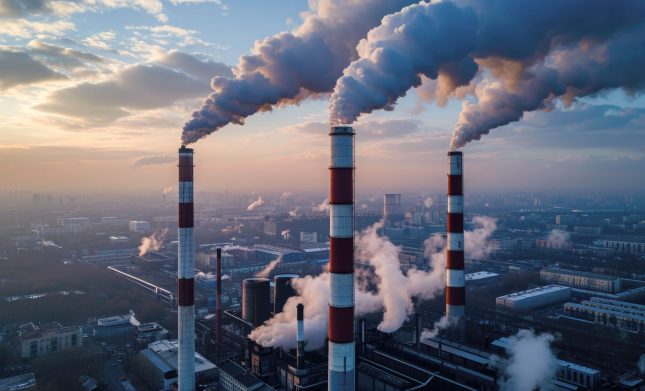The proponents of the “Green New Deal” claim that it is “cleaner”. Is it? That is a reasonable question for those seeking a radical policy change isn’t it?
I do not deny that the climate is changing–and always has been. I do question the response by the left, which, I believe, will make a negligible difference in climate, but will enrich certain parties (politicians and our chief geopolitical adversaries). These facts illustrate the Green New Hoax.
1) Batteries do not make electricity – they store electricity produced elsewhere, primarily by coal, uranium, natural gas-powered plants, or diesel-fueled generators. To say an EV is a zero-emission vehicle is false.
2) Currently forty percent of the electricity generated in the U.S. is from coal-fired plants, so it follows that forty percent of the EVs on the road are coal-powered.
3) It takes the same amount of energy to move a five-thousand-pound gasoline-driven automobile a mile as it does an electric one. The only question: what produces the power? It does not come from the battery; the battery is only the storage device, like a gas tank in a car.
4) There are two major types of batteries, rechargeable, and single-use. The most common single-use batteries are A, AA, AAA, C, D. 9V, and lantern types. Those dry-cell species use zinc, manganese, lithium, silver oxide, or zinc and carbon to store electricity chemically. They all contain toxic, heavy metals.
5) Rechargeable batteries differ somewhat in their internal materials, usually lithium-ion, nickel-metal oxide, and nickel-cadmium. The United States uses three billion of these two battery types a year, and most are not recycled; they end up in landfills. California is the only state which requires all batteries be recycled. If you throw your small, used batteries in the trash, here is what happens to them….All batteries are self-discharging. That means even when not in use, they leak tiny amounts of energy. You have likely ruined a flashlight or two from an old, ruptured battery. When a battery runs down and can no longer power a toy or light, you think of it as dead. It is not fully dead. It continues to leak small amounts of electricity. As the chemicals inside it run out, pressure builds inside the battery’s metal casing, and eventually, it cracks. The metals left inside then ooze out.
6)The ooze in your ruined flashlight is toxic, and so is the ooze that will inevitably leak from every battery in a landfill. All batteries eventually rupture; it just takes rechargeable batteries longer to end up in the landfill.
7) In addition to dry cell batteries, there are also wet cell ones used in automobiles, boats, and motorcycles. The good thing about those is, ninety percent of them are recycled. Unfortunately, we do not yet know how to recycle single-use ones properly.
8) If you are excited about electric cars and a green revolution, take a closer look at batteries and also windmills and solar panels. These three technologies share environmentally destructive production costs.
9) A typical EV battery weighs one thousand pounds, and is about the size of a travel trunk. It contains twenty-five pounds of lithium, sixty pounds of nickel, 44 pounds of manganese, 30 pounds cobalt, 200 pounds of copper, and 400 pounds of aluminum, steel, and plastic. Inside are over 6,000 individual lithium-ion cells. All those toxic components come from mining. To manufacture each EV auto battery, you must process 25,000 pounds of brine for the lithium, 30,000 pounds of ore for the cobalt, 5,000 pounds of ore for the nickel, and 25,000 pounds of ore for copper. All told, you dig up 500,000 pounds of the earth’s crust for just one auto battery.
10) Sixty-eight percent of the world’s cobalt, a significant part of a battery, comes from the Congo. Their mines have no pollution controls, and they employ children who die from handling this toxic material. Should we factor in these diseased and dead children as part of the cost of driving an electric car?
11) California is building the largest battery in the world near San Francisco, and they intend to power it from solar panels and windmills. They claim this is the ultimate in being ‘green,’ but it is not. This construction project is creating an environmental disaster.
12) The main problem with solar arrays is the chemicals needed to process silicate into the silicon used in the panels. To make pure enough silicon requires processing it with hydrochloric acid, sulfuric acid, nitric acid, hydrogen fluoride, trichloroethane, and acetone. In addition, they also need gallium, arsenide, copper-indium-gallium- diselenide, and cadmium-telluride, which also are highly toxic. Silicon dust is a hazard to the workers, and the panels cannot be recycled.
13) Windmills are the ultimate in embedded costs and environmental destruction. Each of the largest ones weighs 1688 tons (the equivalent of 23 houses) and contains 1300 tons of concrete, 295 tons of steel, 48 tons of iron, 24 tons of fiberglass, and the hard to extract rare earths neodymium, praseodymium, and dysprosium. Each set of three blades for the largest turbines weighs 81,000 pounds and will last 15 to 20 years, at which time it must be replaced. We cannot recycle used blades.
14) There may be a place for these technologies, but shouldn’t we look beyond the flawed narrative of “zero emissions”.
15) “Going Green” may sound like the Utopian ideal but when you look at the hidden and embedded costs realistically with an open mind, you can see that Going Green is more destructive to the Earth’s environment than meets the eye, for sure.”



1 comment
Good piece. I agree totally. I have major issues , mostly with disposal after the (esp) car batteries are “dead”. I don’t think as of now, they cam be recycled, so they go to landfills. Ditto for Solar panels and and windmills. Whatever happened to Environmental Impact Statements?
And yes, the earth’s climate is constantly changing on its own naturally. That essentially does not concern me. What does concern me is the amount of “stuff” that goes to landfills. And there seems to be no concerted effort to reduce/eliminate them. Our water supply is in increasing jeopardy.
BTW, Hariett Tubman is excellent choice. So is Tex.
Thanks for starting this.